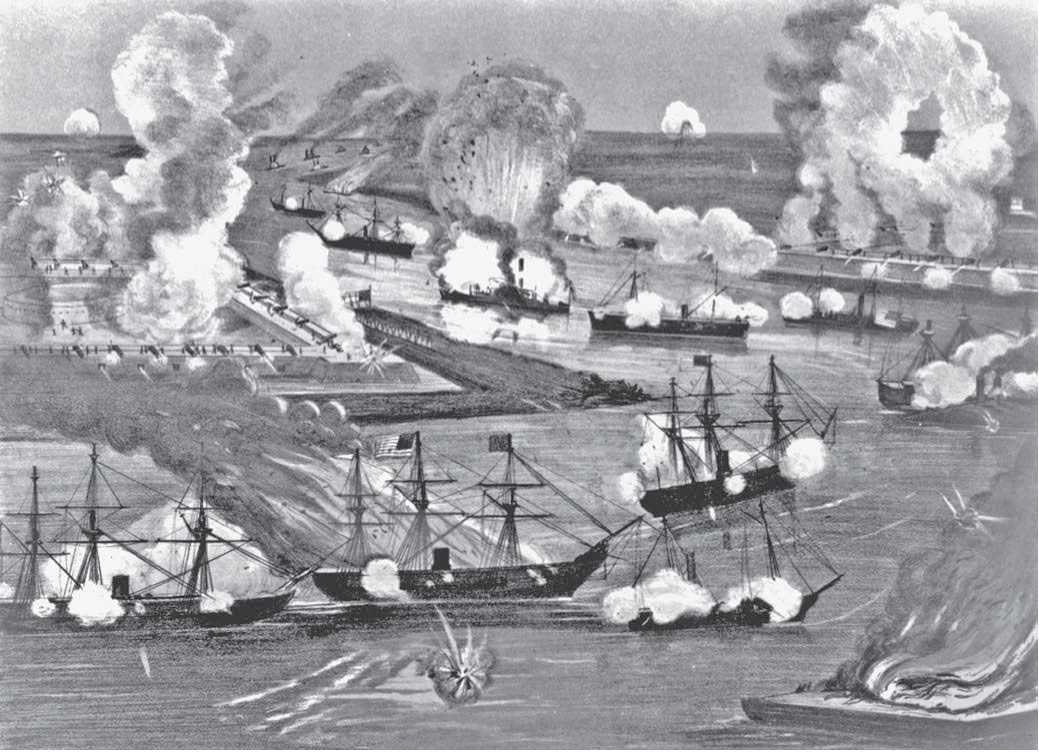The New Orleans riot in 1866 was one of several postwar civil disturbances that demonstrated to the North that white ex-Confederates were not accepting of Unionism and

Battle of New Orleans, April 18-25, 1862 (Library of Congress)
EMANCIPATION. Immediately after the CiViL War ended, Northerners had turned their sights to governing the South. Angered by the refusal of the Louisiana legislature to grant African-American men the right to vote, and spurred by the enactment of Black Codes, Radical Republicans reconvened the Louisiana constitutional convention of 1864. Approximately 200 African-American Civil War veterans joined the 25 white delegates who arrived in New Orleans for the convention. This show of support by African Americans upset white former Confederates who felt that Louisiana would fall out of Southern white control and into the hands of freedmen and Northerners.
On July 30, 1866, the ex-Confederates and local residents along with New Orleans police attacked both the white delegates and African-American supporters. Although they raised white flags of surrender, delegates and supporters were shot as they fled the convention proceedings. In all, the fighting injured 100 persons. Rioters also killed 34 African Americans and three Northern white Radical Republicans. Witnesses remembered the riot being as violent as some of the Civil War battles in which they had participated. Although federal troops were called in to mediate the conflict, they arrived too late to help.
The New Orleans riot became an important benchmark for Northerners, illustrating the necessity of a firm Reconstruction policy. Along with the establishment of Black Codes, the disturbance helped Radical Republicans win a decisive victory in the November 1866 election.
See also Memphis, Tennessee, riots.
Further reading: James G. Hollandsworth, An Absolute Massacre: The New Orleans Race Riot of July 30, 1866 (Baton Rouge: Louisiana State University Press, 2001); Gilles Vandal, The New Orleans Riot of1866: Anatomy of a Tragedy (Lafayette: Center for Louisiana Studies, University of Southwestern Louisiana, 1983).
—Samantha Holtkamp Gervase




 World History
World History









